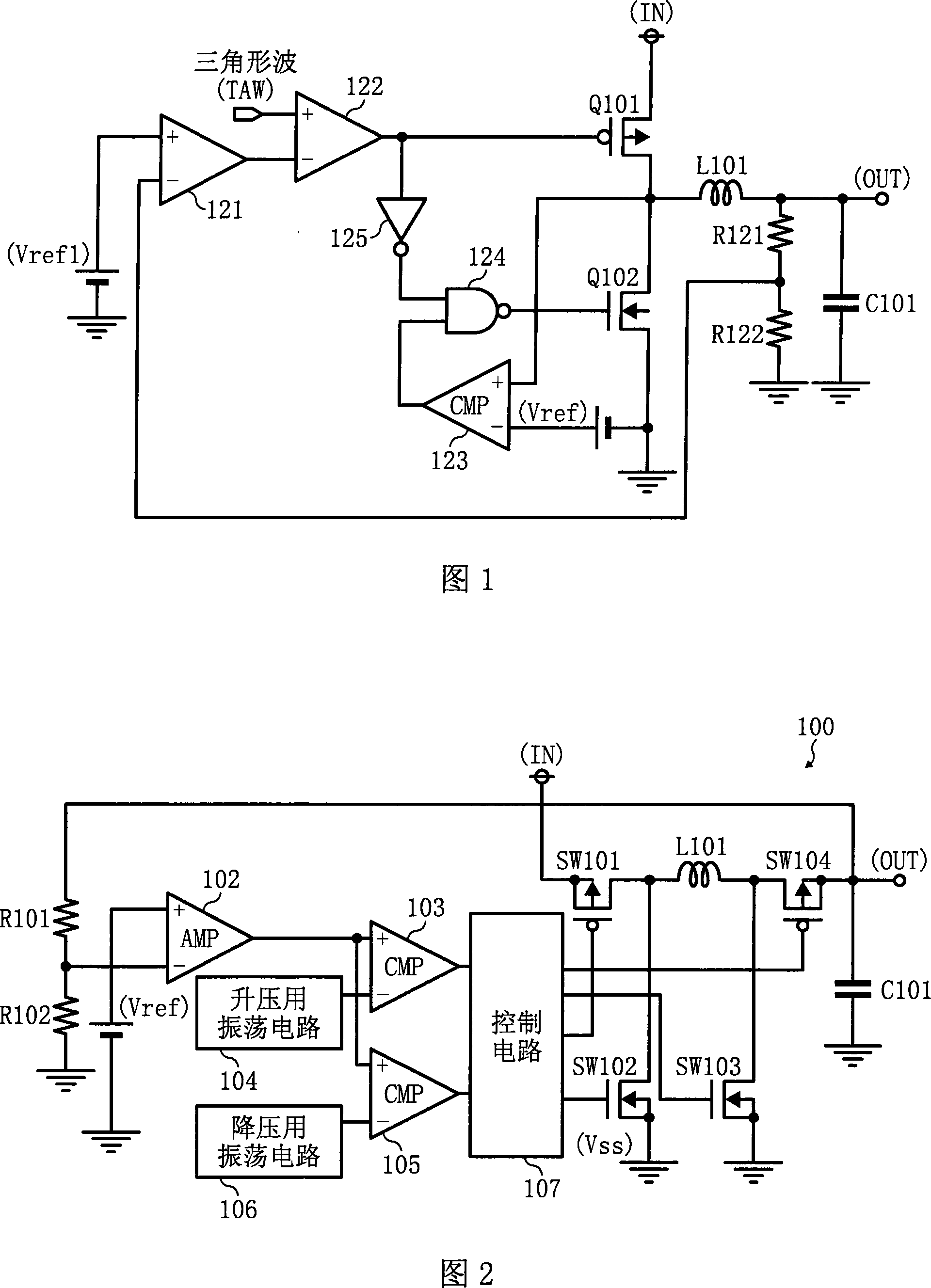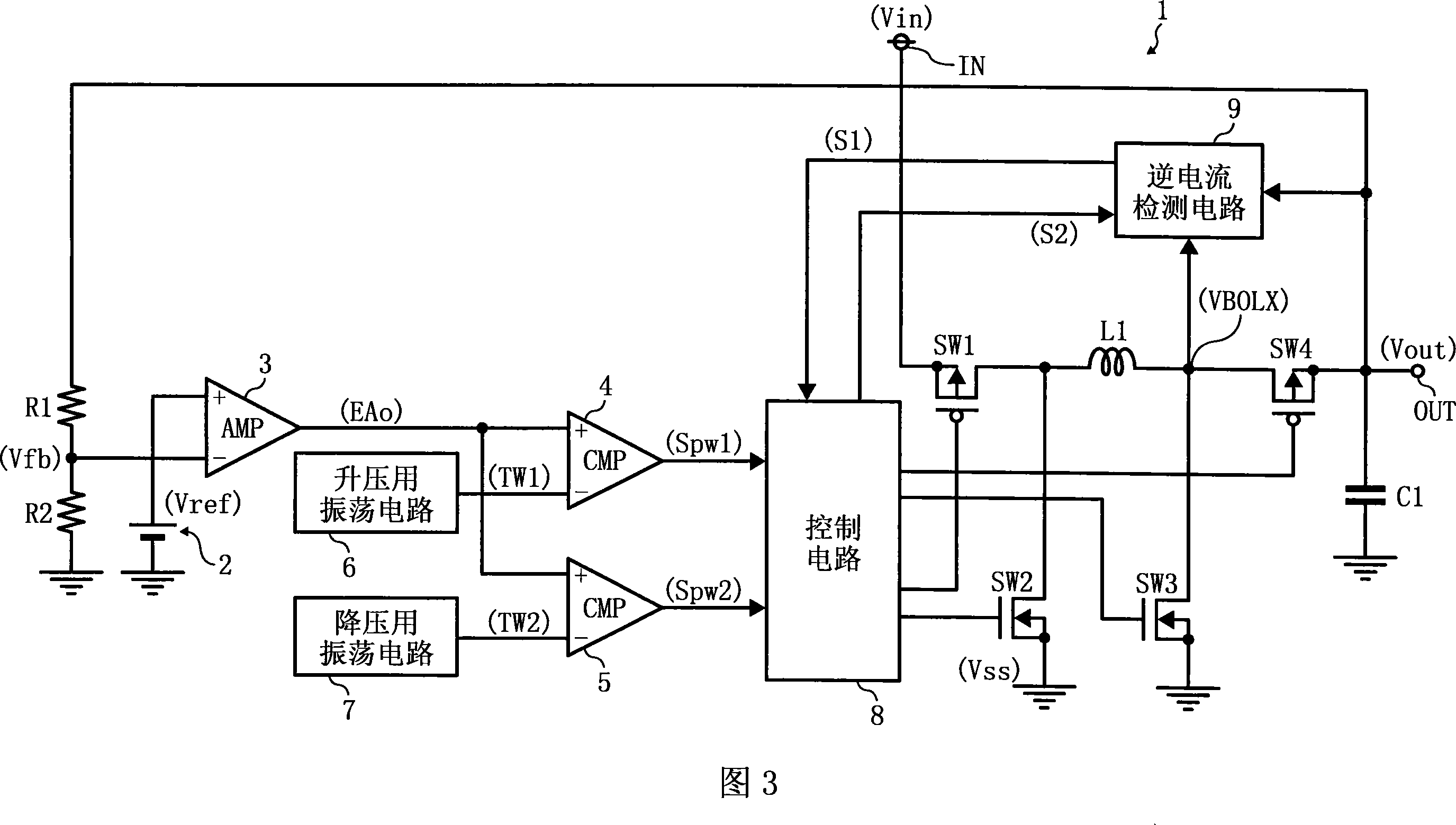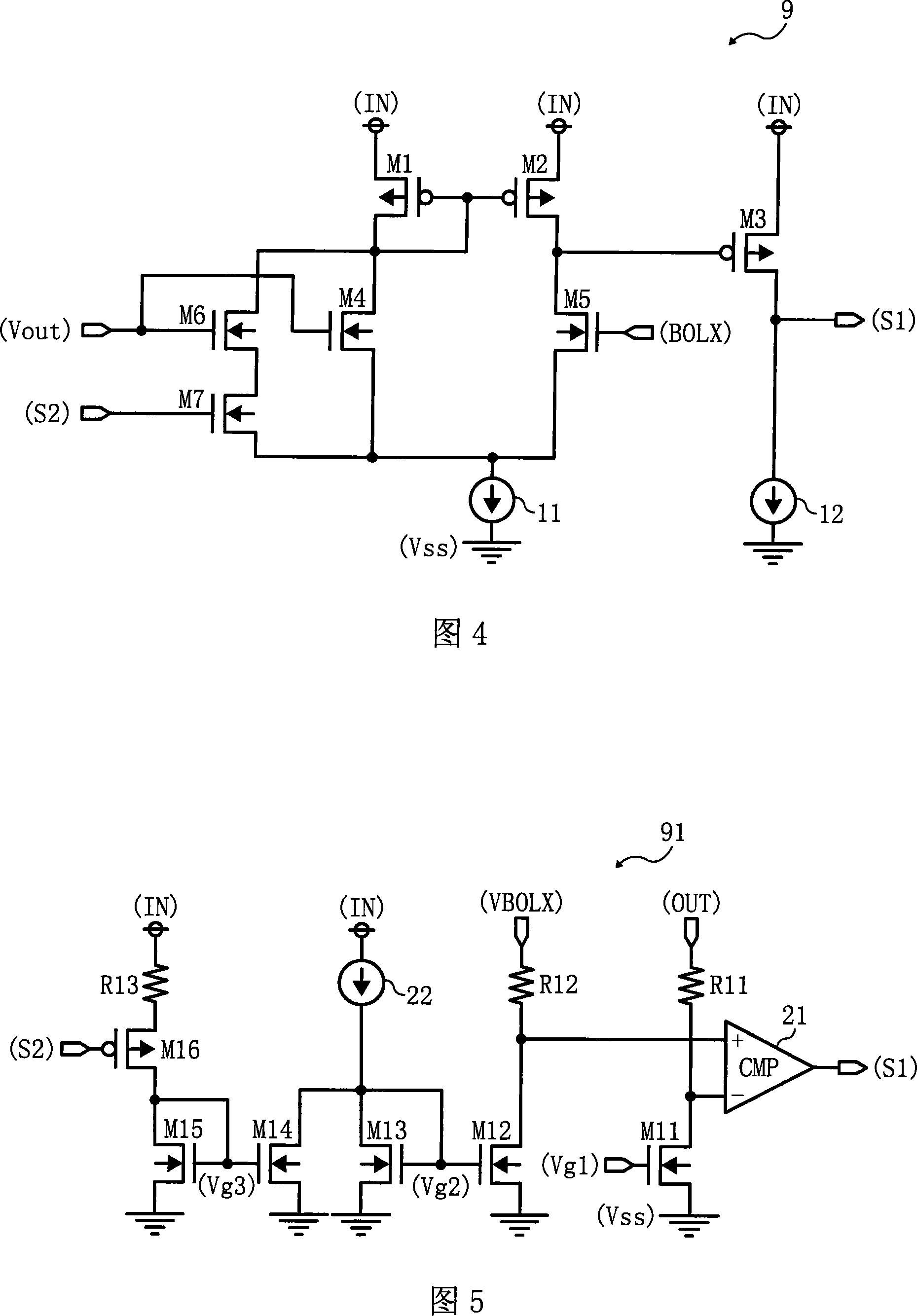Switching regulator
A switching regulator and switching technology, applied in instruments, output power conversion devices, DC power input conversion to DC power output, etc., can solve problems such as low efficiency, reverse current generation, and no consideration of input voltage and voltage changes, etc. Achieve the effect of improving efficiency and preventing reverse current
- Summary
- Abstract
- Description
- Claims
- Application Information
AI Technical Summary
Problems solved by technology
Method used
Image
Examples
no. 1 example
[0057] FIG. 3 shows a circuit example of the buck-boost switching regulator according to the first embodiment of the present invention.
[0058] In Fig. 3, the buck-boost switching regulator 1 inputs the input voltage Vin to the input terminal IN, and converts the input voltage Vin into a set constant voltage as an output The voltage Vout is output from the output terminal OUT.
[0059] The buck-boost switching regulator 1 includes an inductor L1, a step-down switching transistor SW1, a step-down synchronous rectification transistor SW2, a step-up switching transistor SW3, and a step-up synchronous rectification transistor SW4. The step-down switching transistor SW1 is composed of a PMOS transistor, and switches for a step-down operation according to an input control signal, and charges the inductor L1 from the input voltage Vin. The step-down synchronous rectification transistor SW2 is composed of Composed of NMOS type transistors, the switch for the step-down operation is i...
PUM
 Login to View More
Login to View More Abstract
Description
Claims
Application Information
 Login to View More
Login to View More - R&D
- Intellectual Property
- Life Sciences
- Materials
- Tech Scout
- Unparalleled Data Quality
- Higher Quality Content
- 60% Fewer Hallucinations
Browse by: Latest US Patents, China's latest patents, Technical Efficacy Thesaurus, Application Domain, Technology Topic, Popular Technical Reports.
© 2025 PatSnap. All rights reserved.Legal|Privacy policy|Modern Slavery Act Transparency Statement|Sitemap|About US| Contact US: help@patsnap.com



